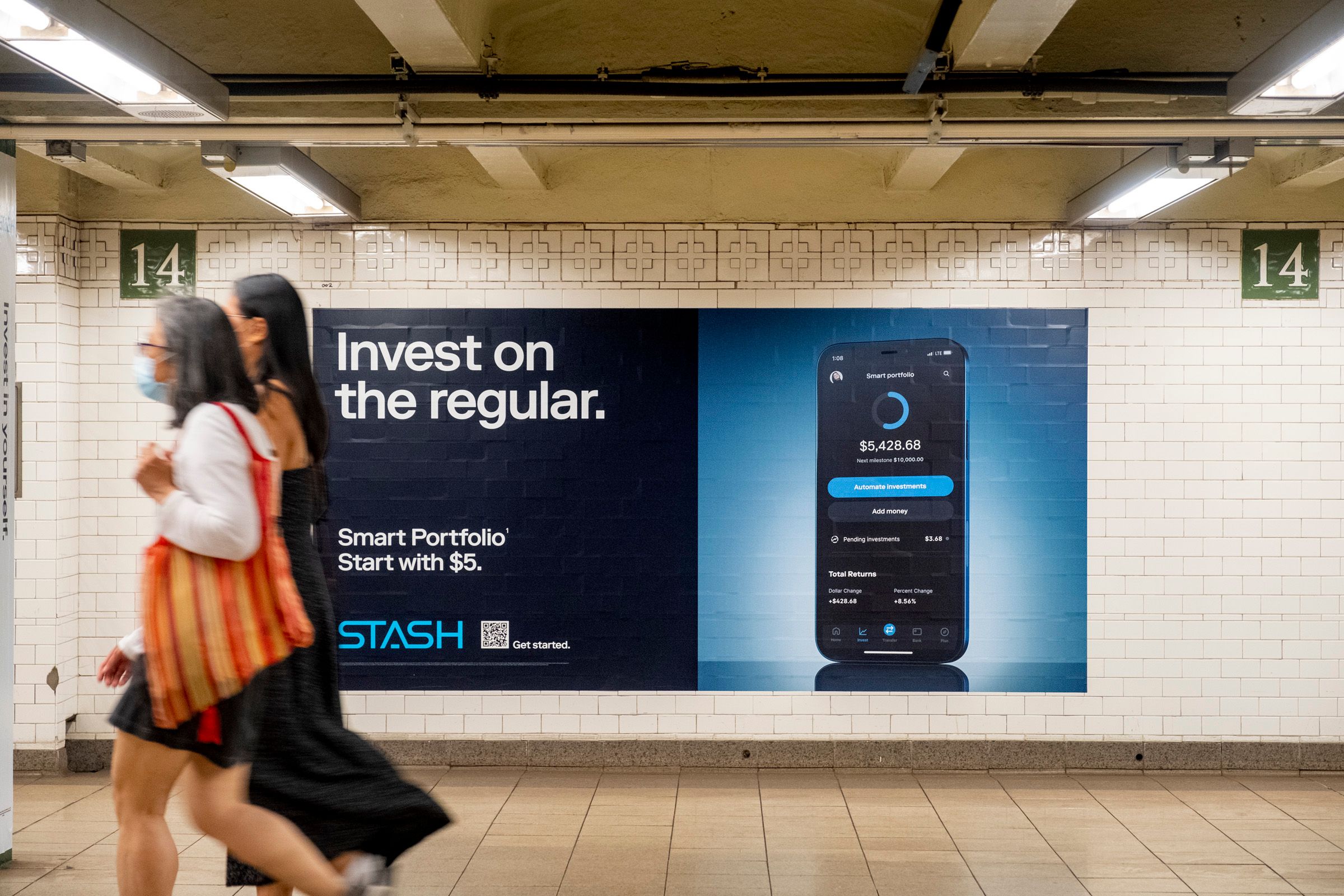Member Exclusive, Modern Marketing
‘You can make investing as regular as your route’: Behind Stash’s new marketing campaign against day trading
- Stash’s marketing campaign, set to last until the end of this month, has enveloped Union Square’s subway station, spreading the message that anyone can invest, and everyone should invest long-term.
- Stash’s marketing initiative comes in the midst of this year’s investing boom, as more people than ever are investing.








